GRIMP JAPAN 2025 Review ( part 2 )
Continued on the next chapter, let’s review more exciting highlights from the competition.
Task 6
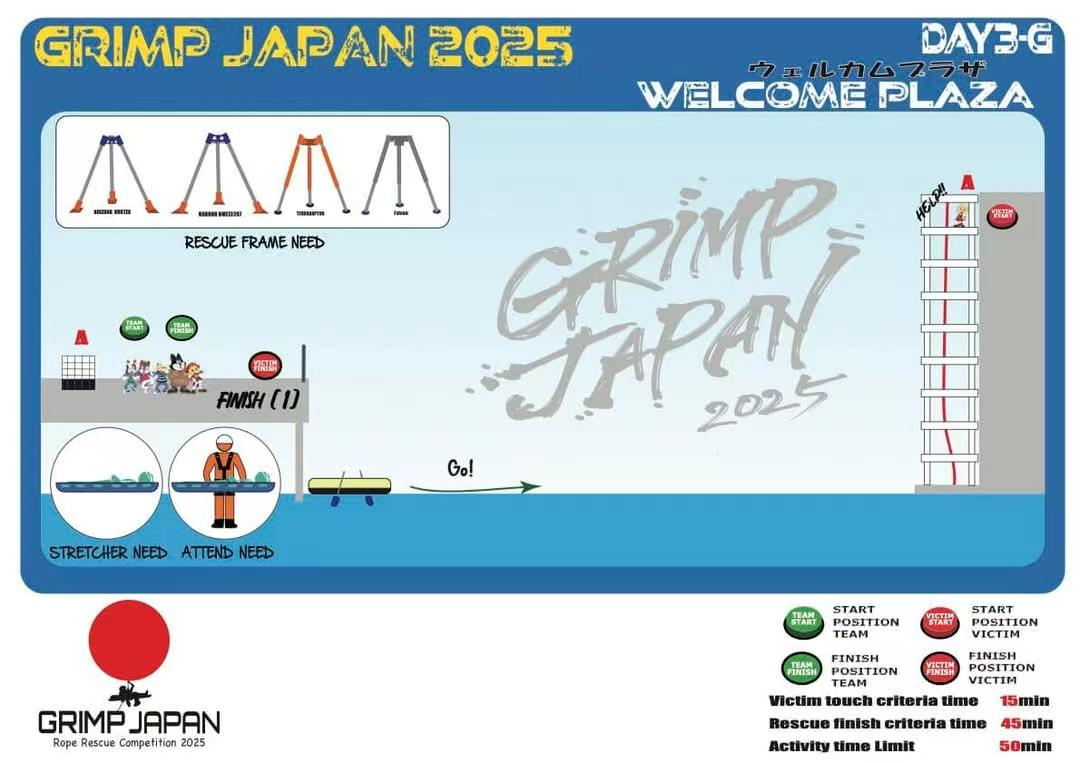
Problem-Solving Approach:
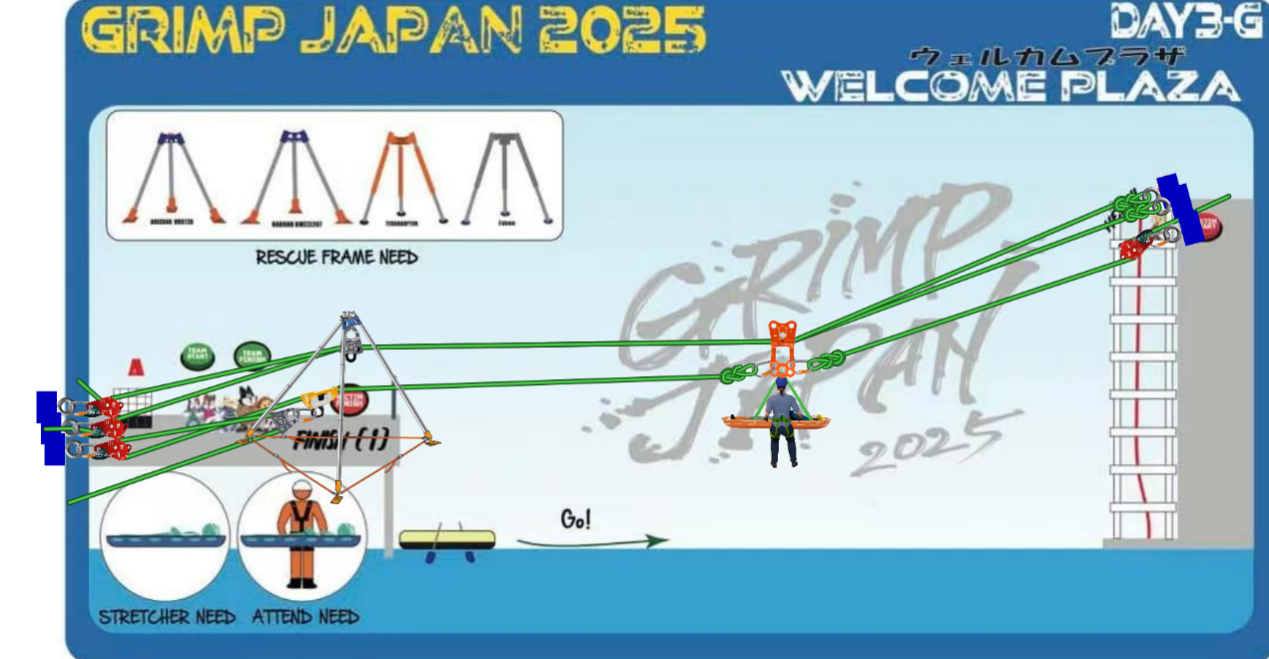
This task can still utilize a tripod to set up a high anchor point, making it easier for the stretcher to
cross the guardrail. Use two RD2 to set up a high-line system, and another RD2 to create a pulley
system for pulling the stretcher. An additional RD2 is used at the top to set up a release system.
This task has a tripod available, but it is not mandatory. Rescue personnel can row across the river to
set up the system.


On the opposite side of the river, there is a higher I-beam steel structure where wire anchor strop
can be used.
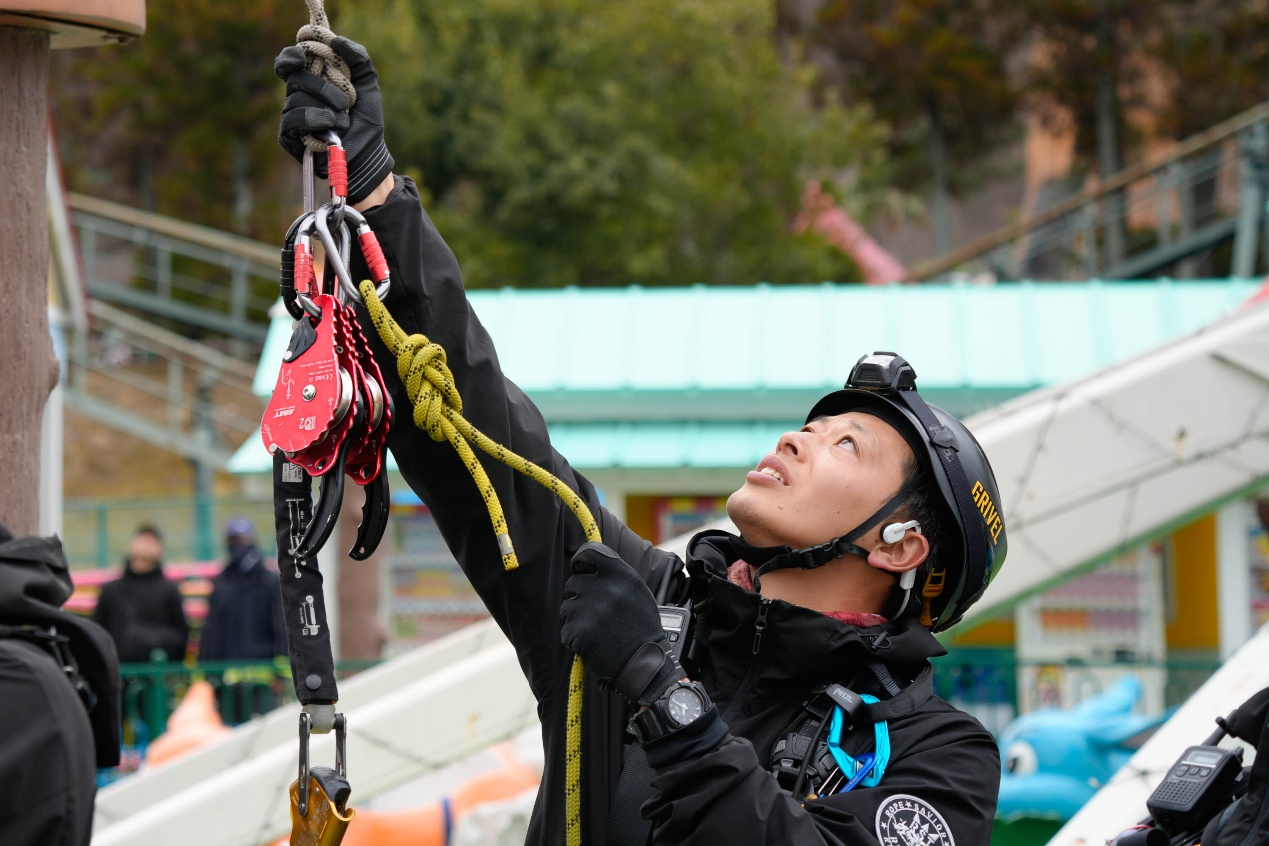
At the lower side, several descenders are used to tighten the rope bridge and pull the stretcher.



Task 7

Problem-Solving Approach:
This task is essentially a combination of two independent parts. The first part involves lowering the
injured person from passenger car to the ground. The second part requires transporting the injured
person on a stretcher to a second-floor platform in an amusement park.
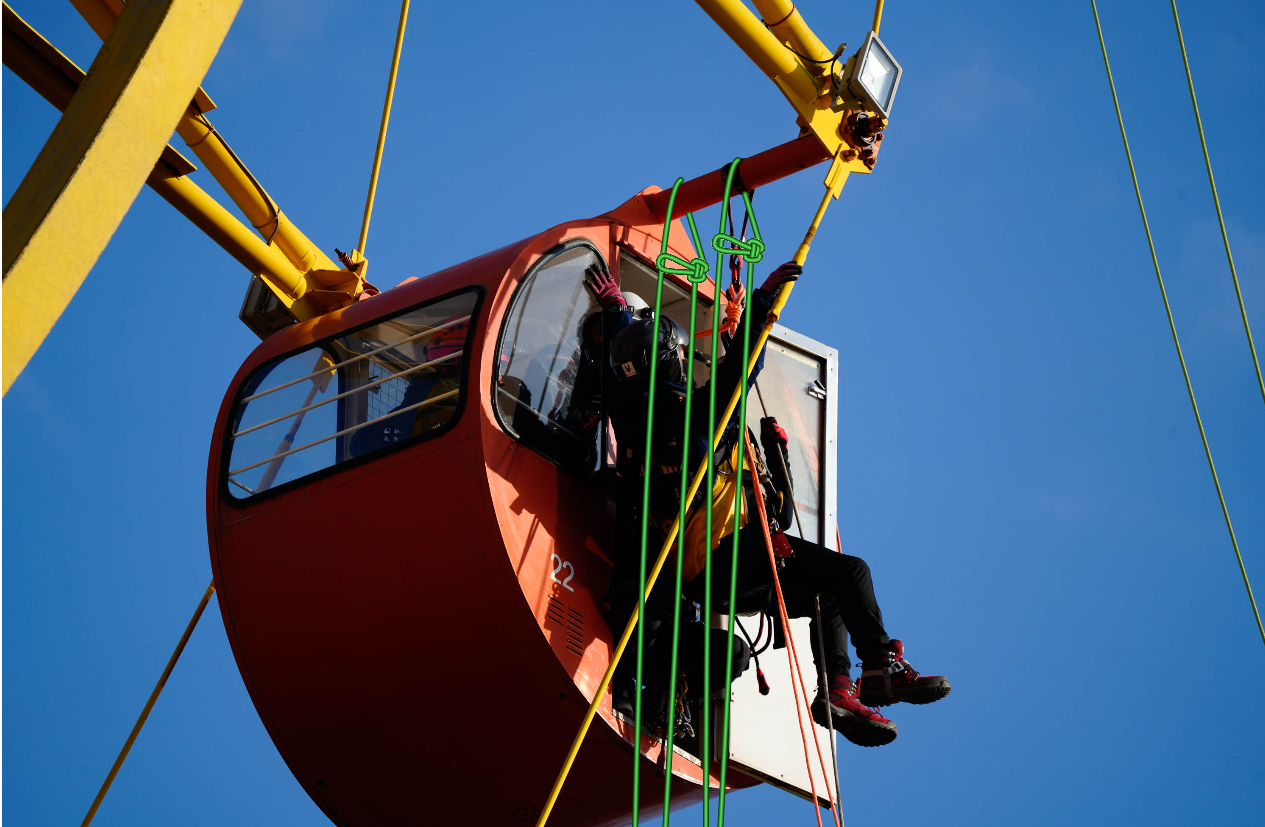
In the first section, the organizer has set ropes for ascending. Rescue personnel can climb up directly,
set up a retrievable system using their own ropes, and secure the injured person with a triangular
sling to lower them down. After reaching the ground, the ropes are retrieved and organized, while
simultaneously placing the injured person onto a stretcher for ground transfer to the second section
area.
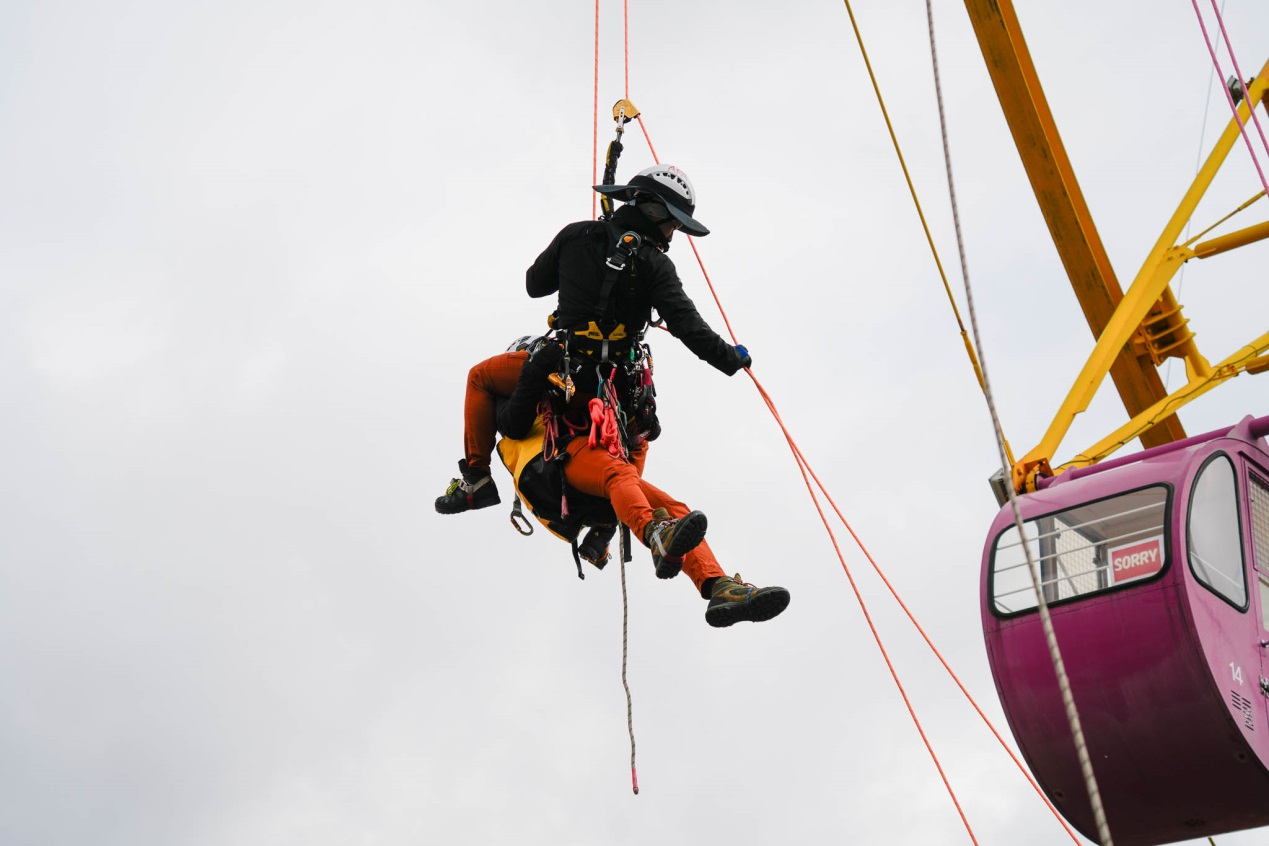
In the second part, there are multiple solution approaches. One can use a cross-haul system or
directly lift from an inner anchor point above and allow the stretcher to pass over a simple edge.
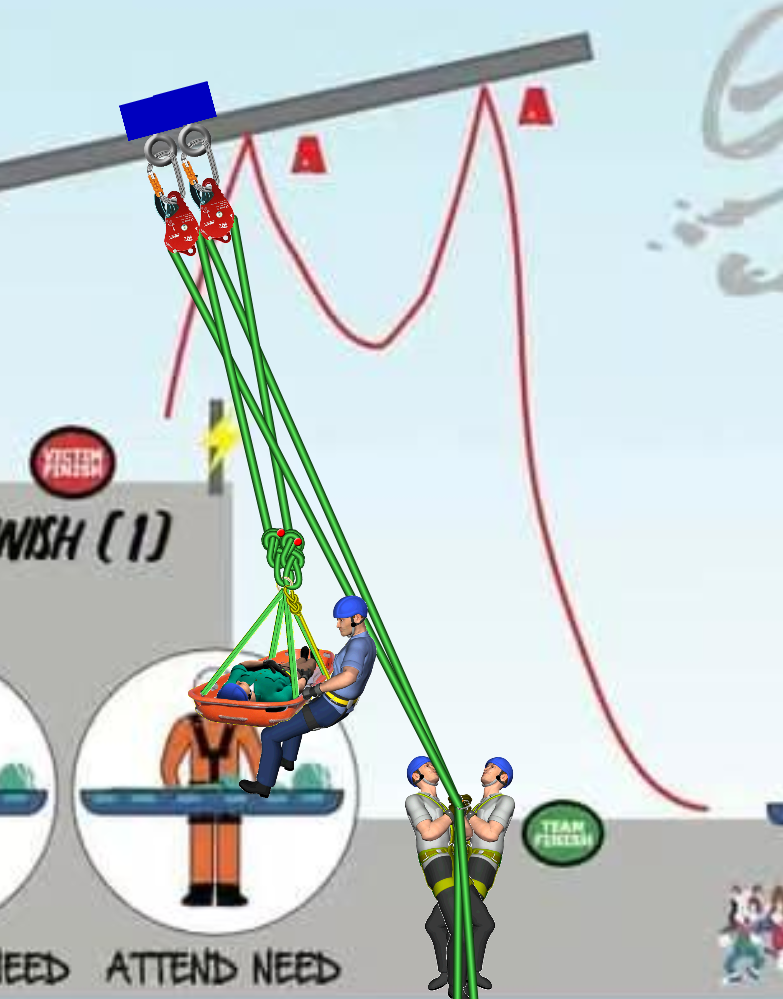
As shown in the image above, a counterweight lifting method can be employed. The accompanying
personnel need to manage the edge-passing smoothly.


Task 8
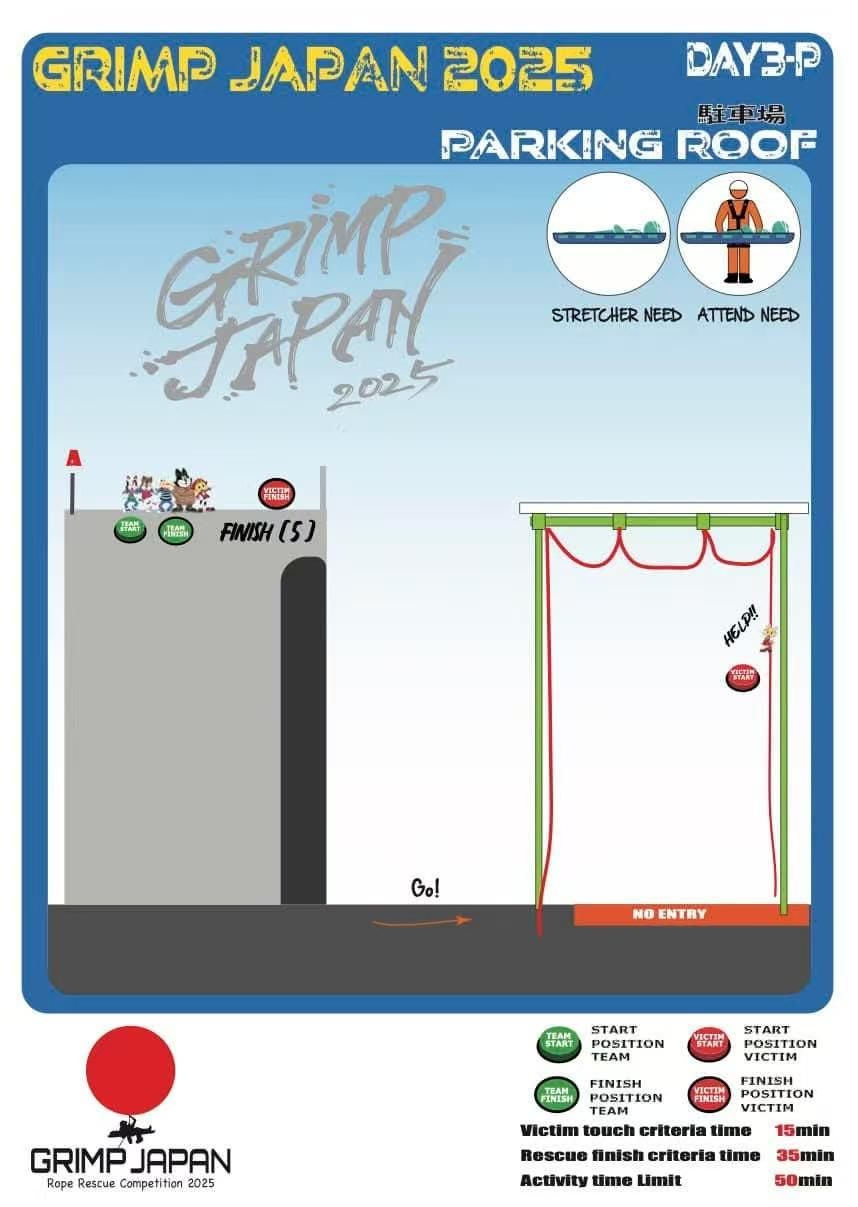
Problem-Solving Approach:
This task is again a combination of two small parts. The first part involves loading the injured person,
who is suspended on a rope, into a stretcher mid-air and traversing him across a spatial area without
landing, then lowering them into a designated zone. Methods like cross-hauling can be used.
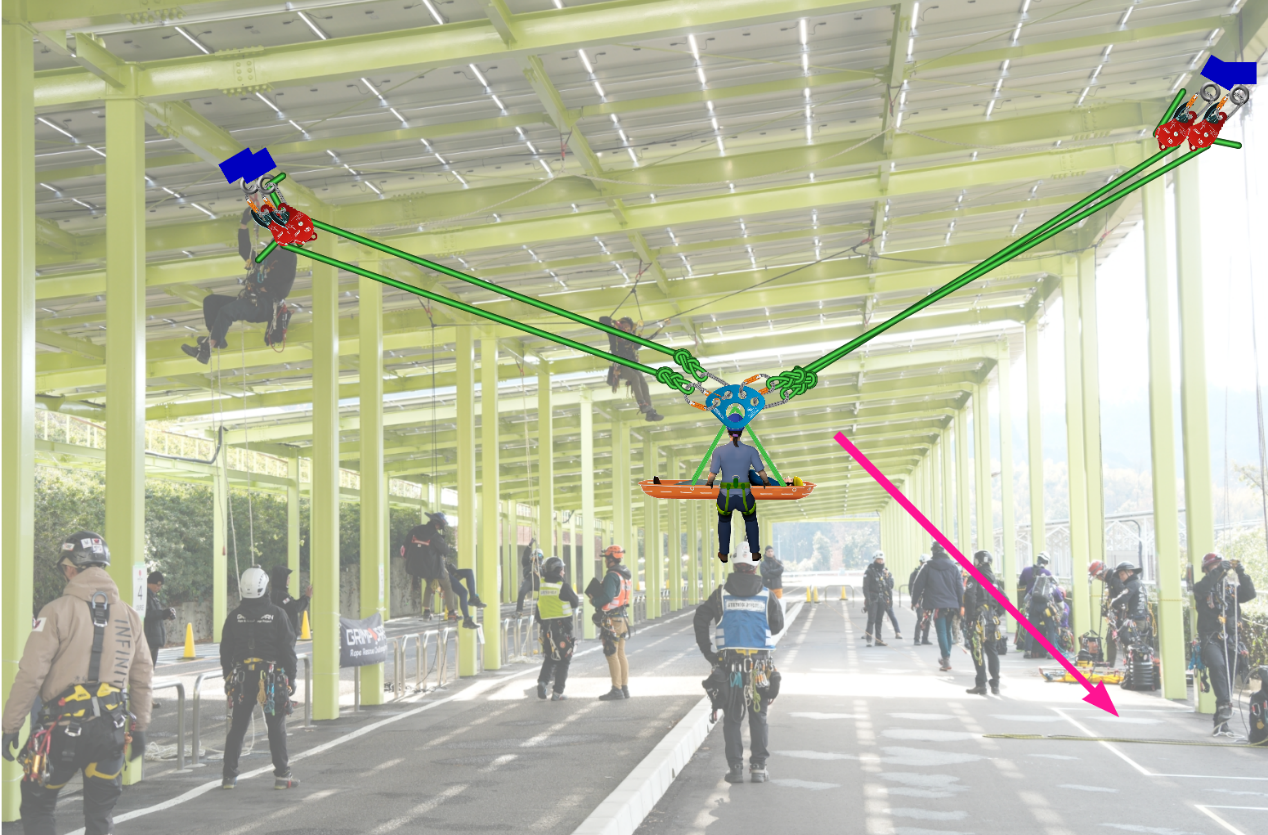
The second part involves lifting the stretcher with the injured person onto a bridge. This section only
requires passing one edge, almost no difficulty for teams that have already overcome multiple
challenging tasks.
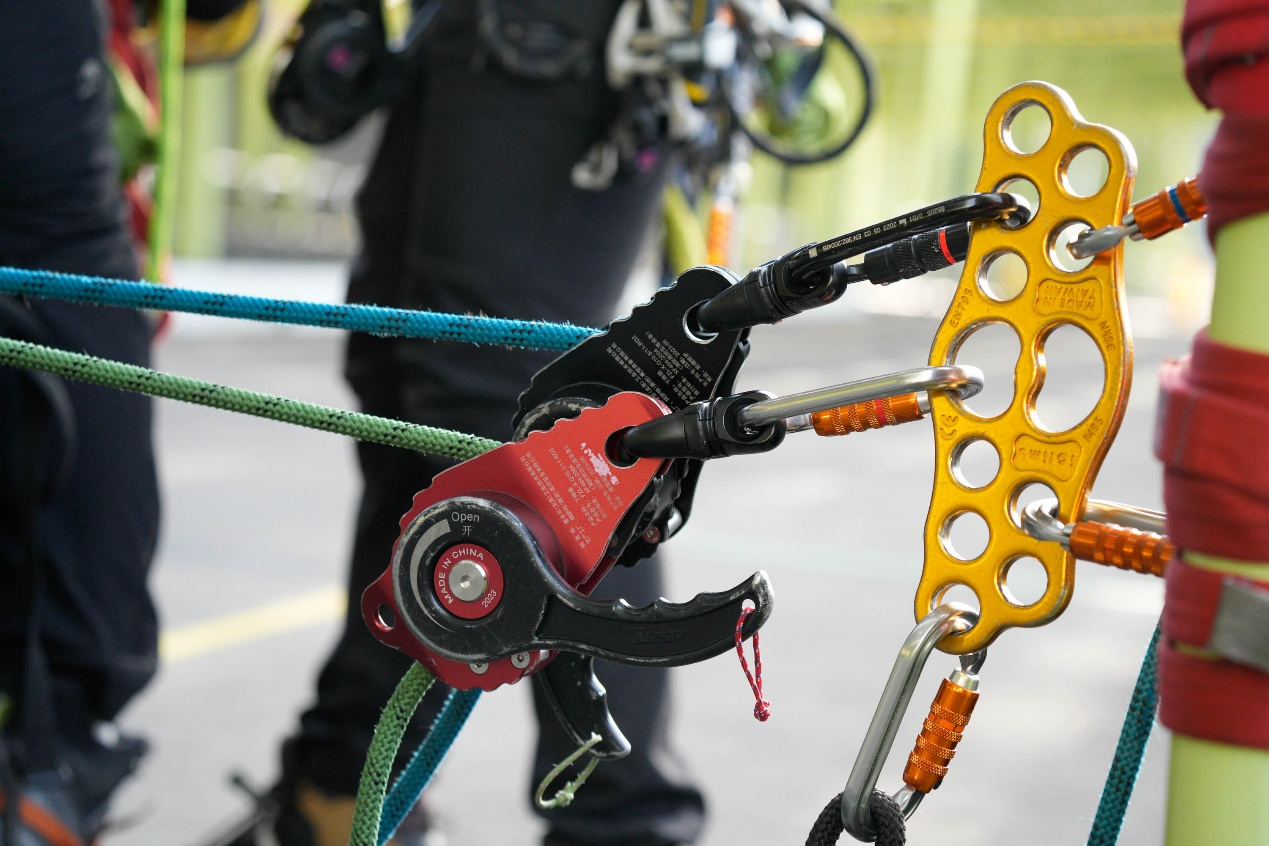
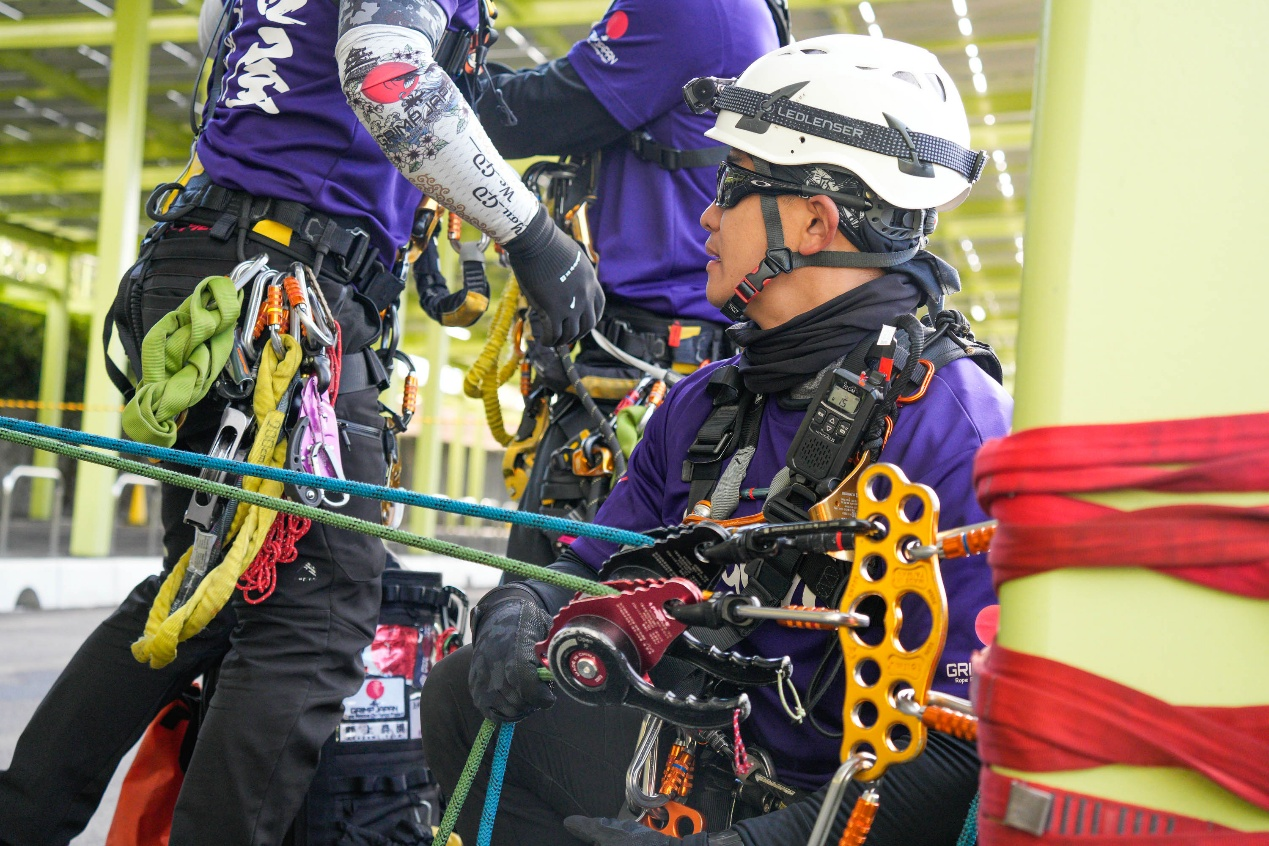
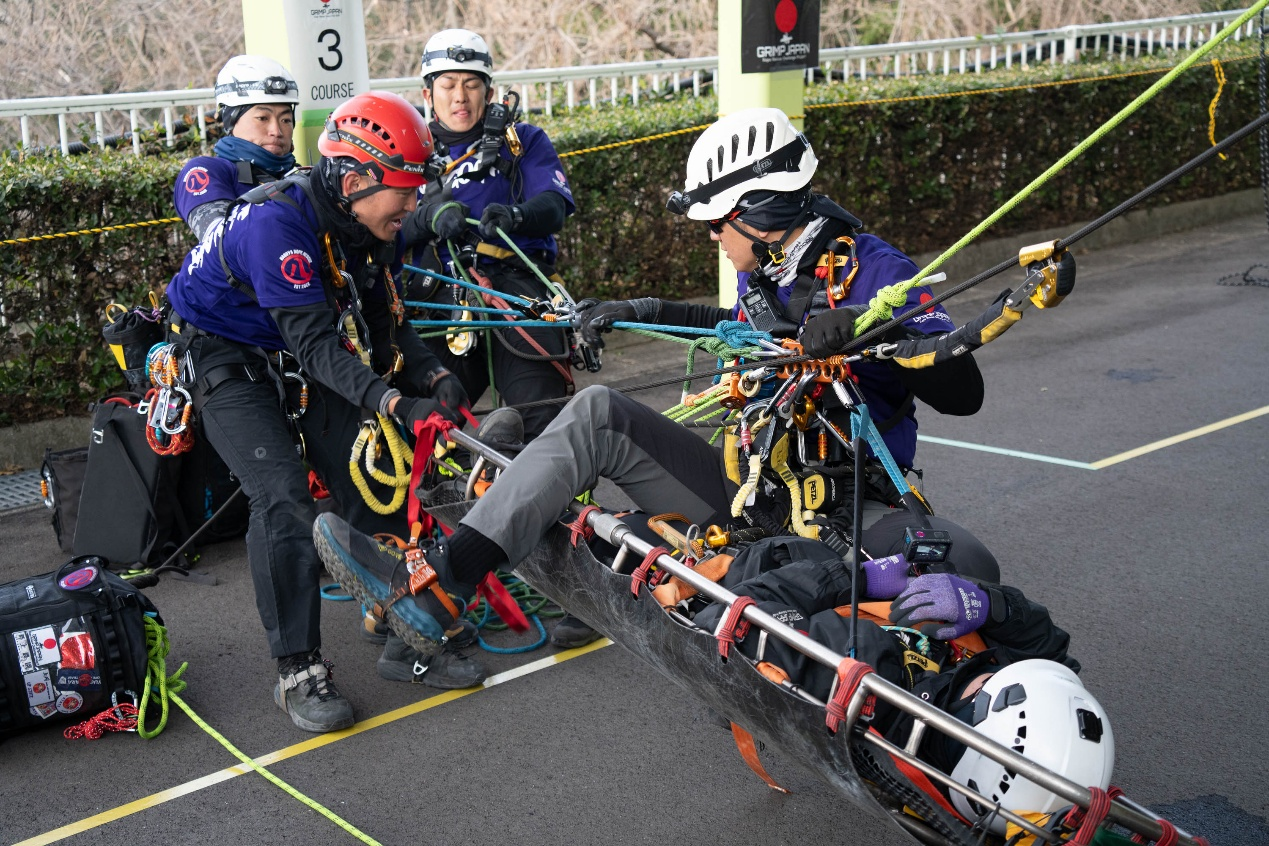

Some teams set anchors at a low point on the ground and used a inclined high-line system to lower
the stretcher, though they might encounter issues with insufficient clearance height.
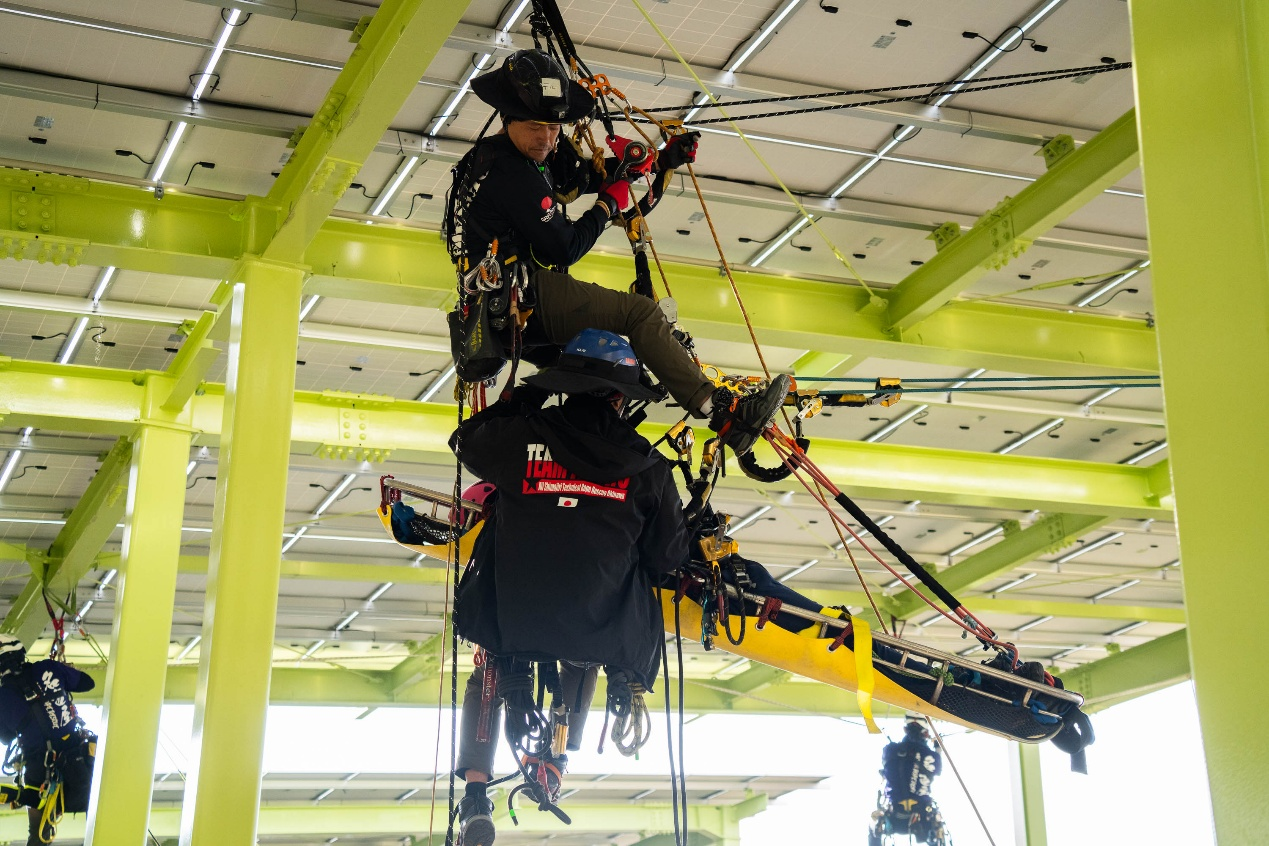
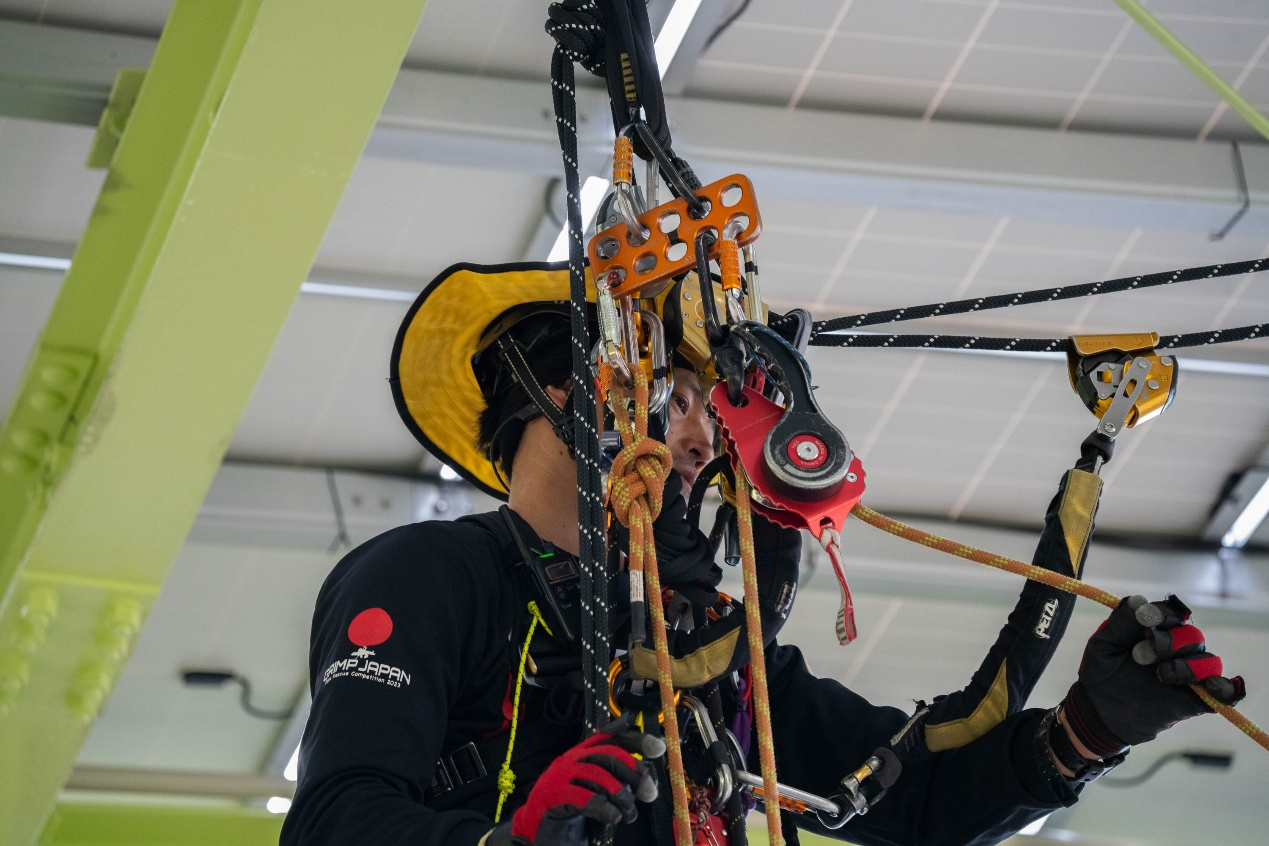
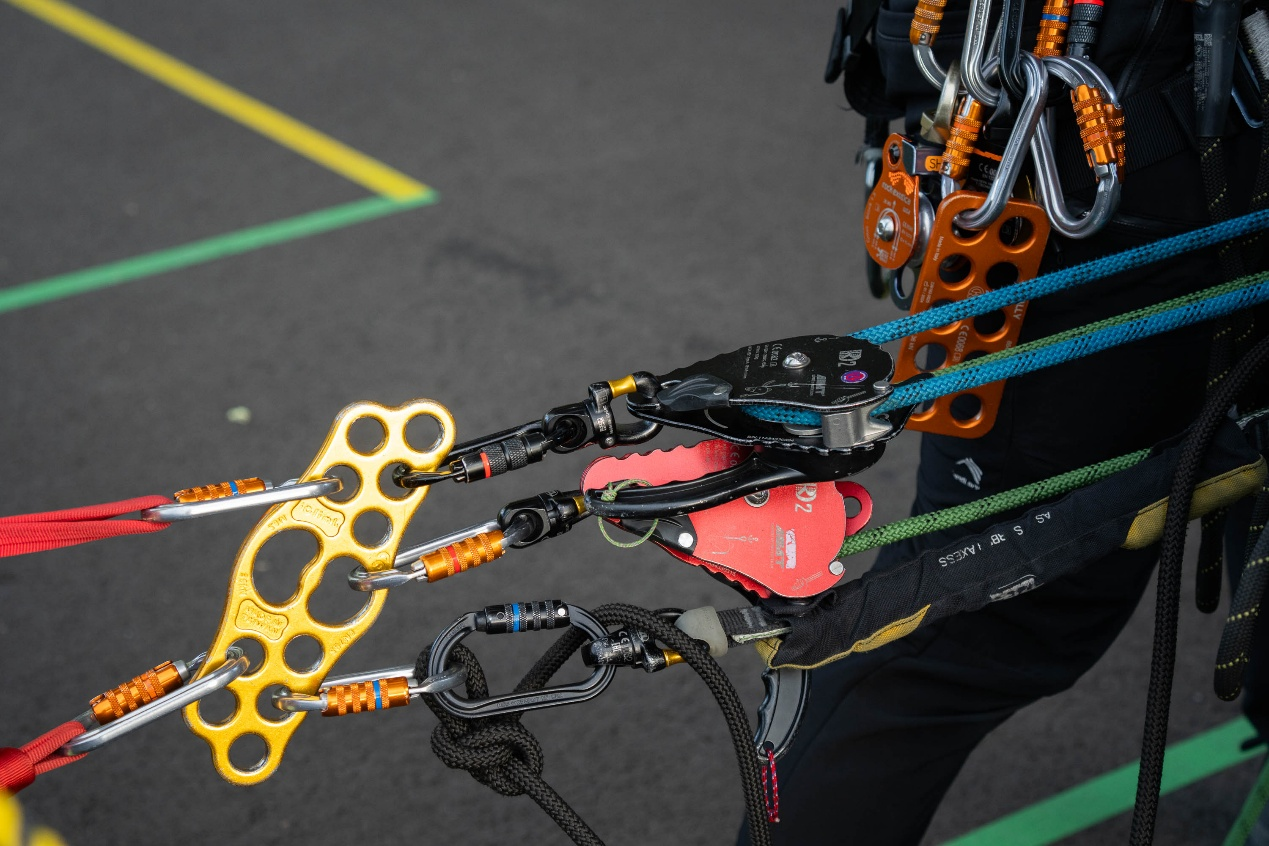
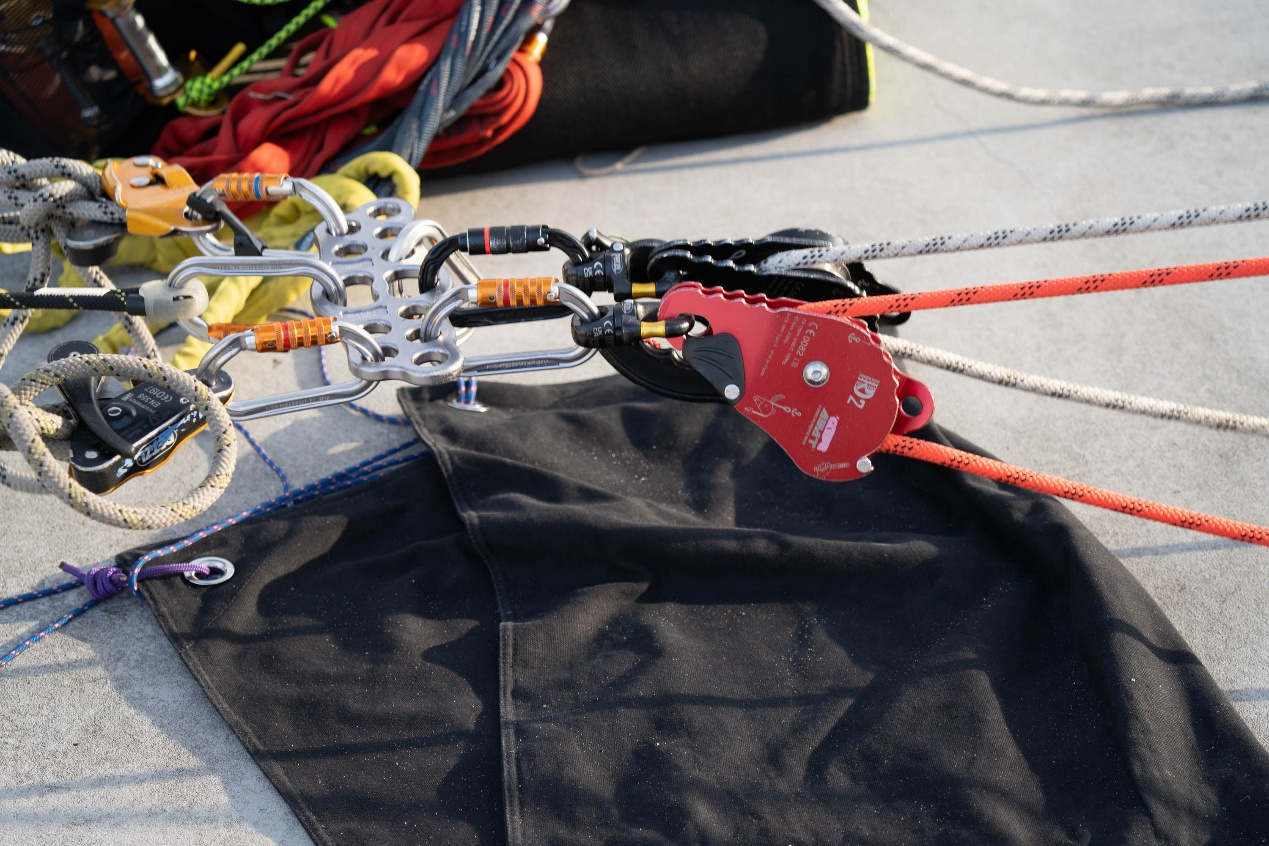
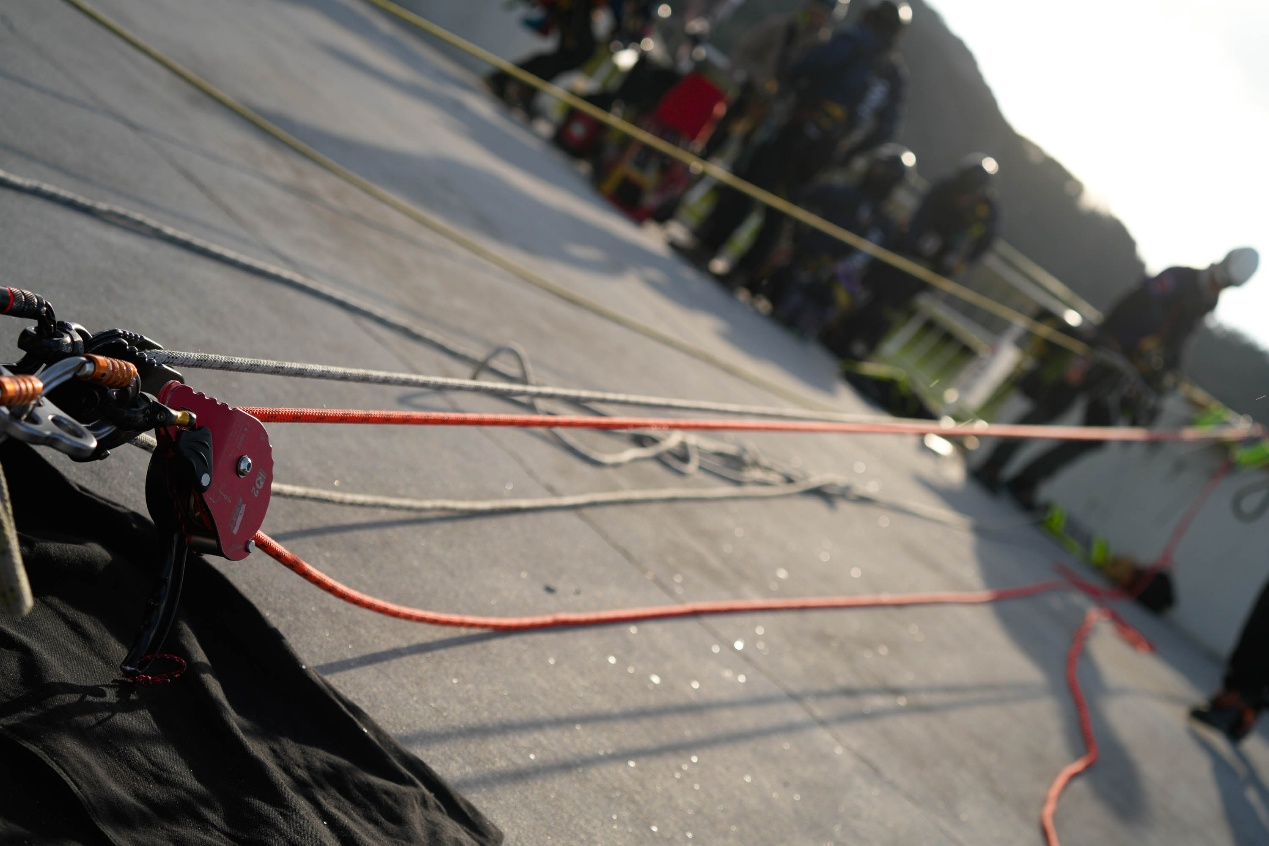
The hauling system on the bridge is a routine operation. Once past the edge, the task is essentially
complete. Many teams used RD2 for the lifting operation.
Task 9
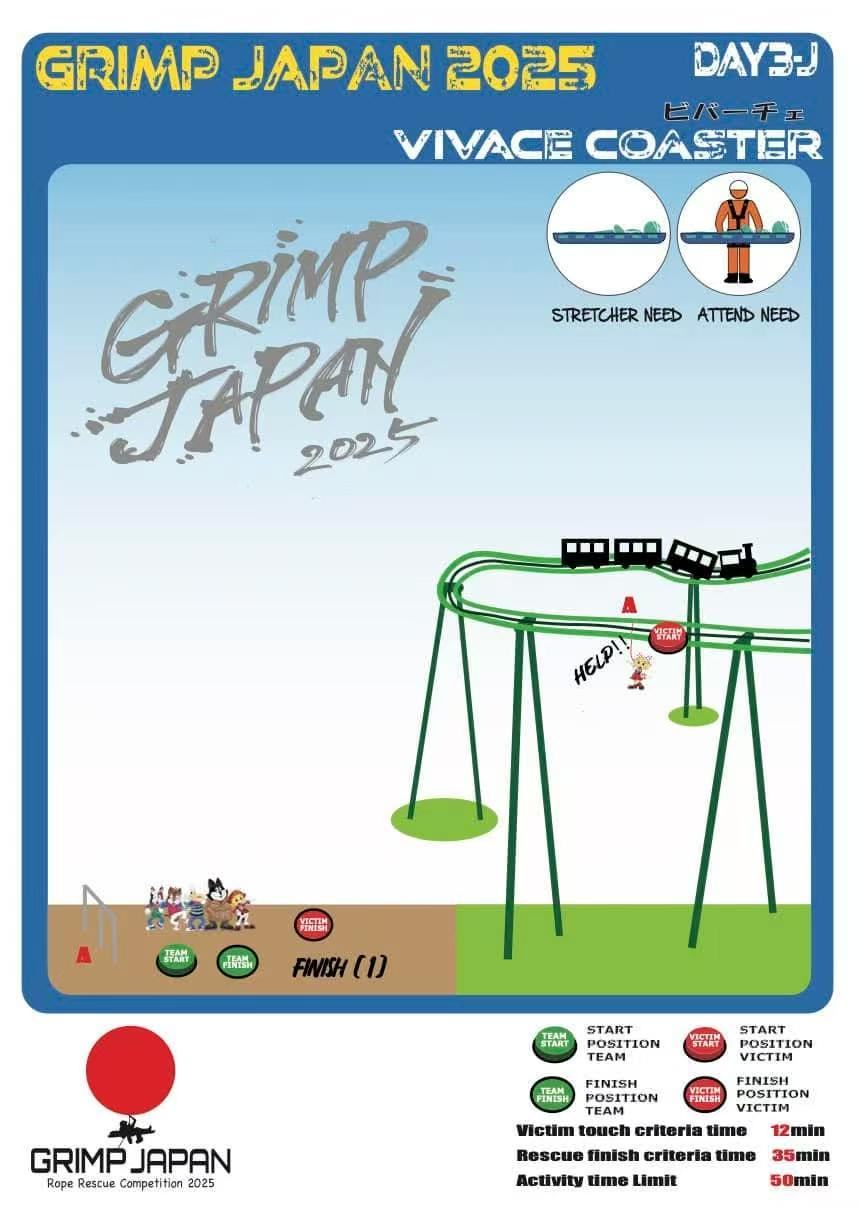
Problem-Solving Approach:
This task is arguably the most outstanding in the entire competition.
The injured person is suspended on a roller coaster track, and the team must load him into a stretcher
mid-air and lower them diagonally to the ground. The organizer provided a thin guide rope to
facilitate the pulling of the main rope.
The challenge lies in the inclined rope climb and the need to disconnect the injured person's
suspension and transfer them into the stretcher under extremely tight conditions.
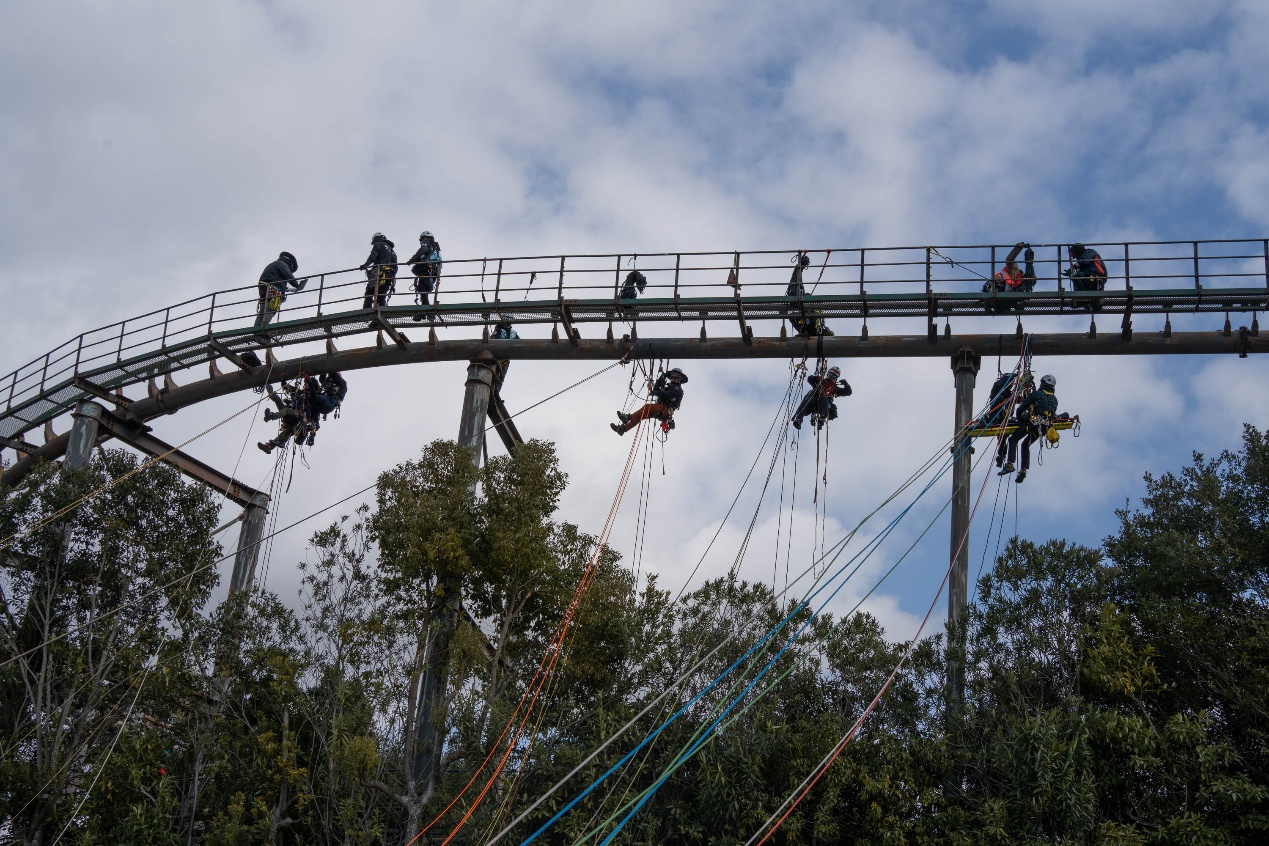
Overview of the roller coaster track.

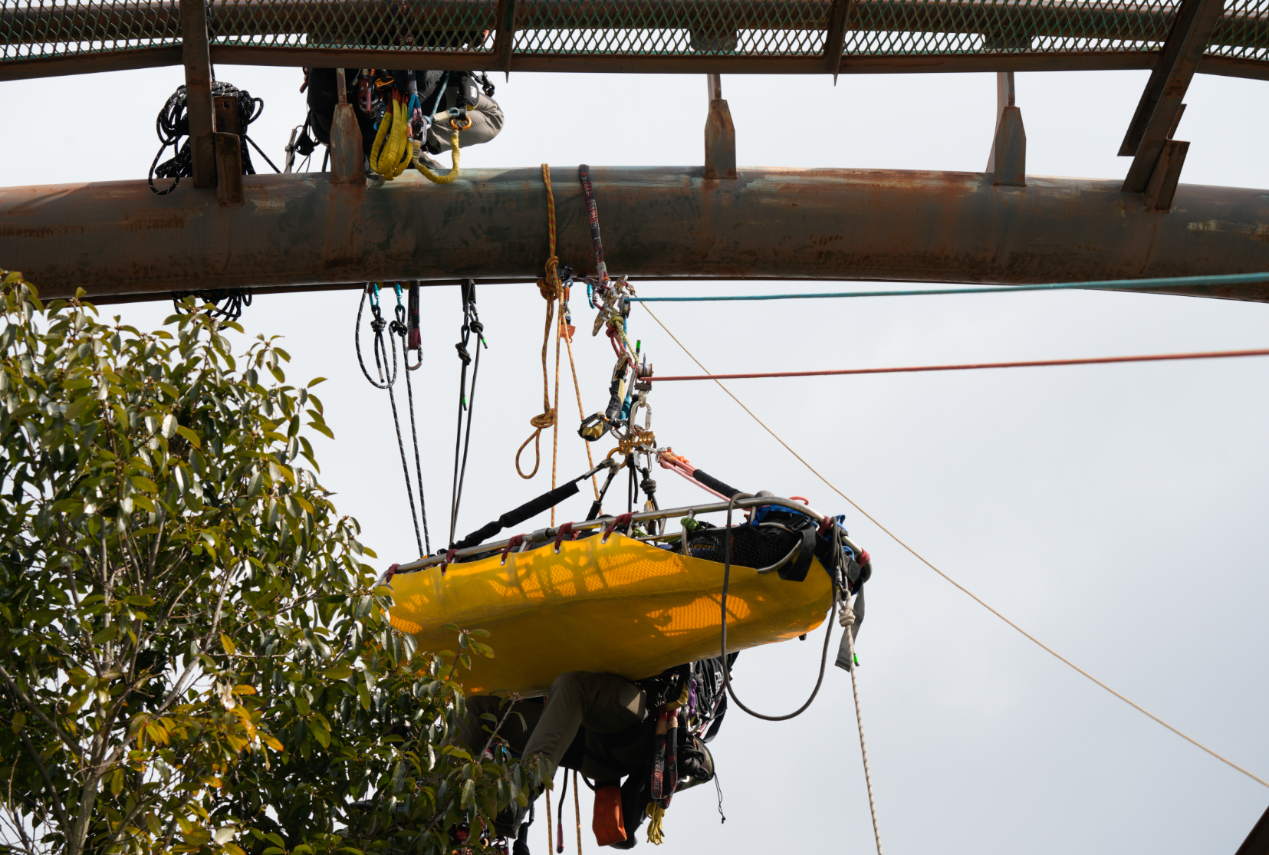
Once the injured person is successfully loaded into the stretcher, the inclined descent becomes
relatively straightforward. Systems like inclined high-lines or skate block system can be used.
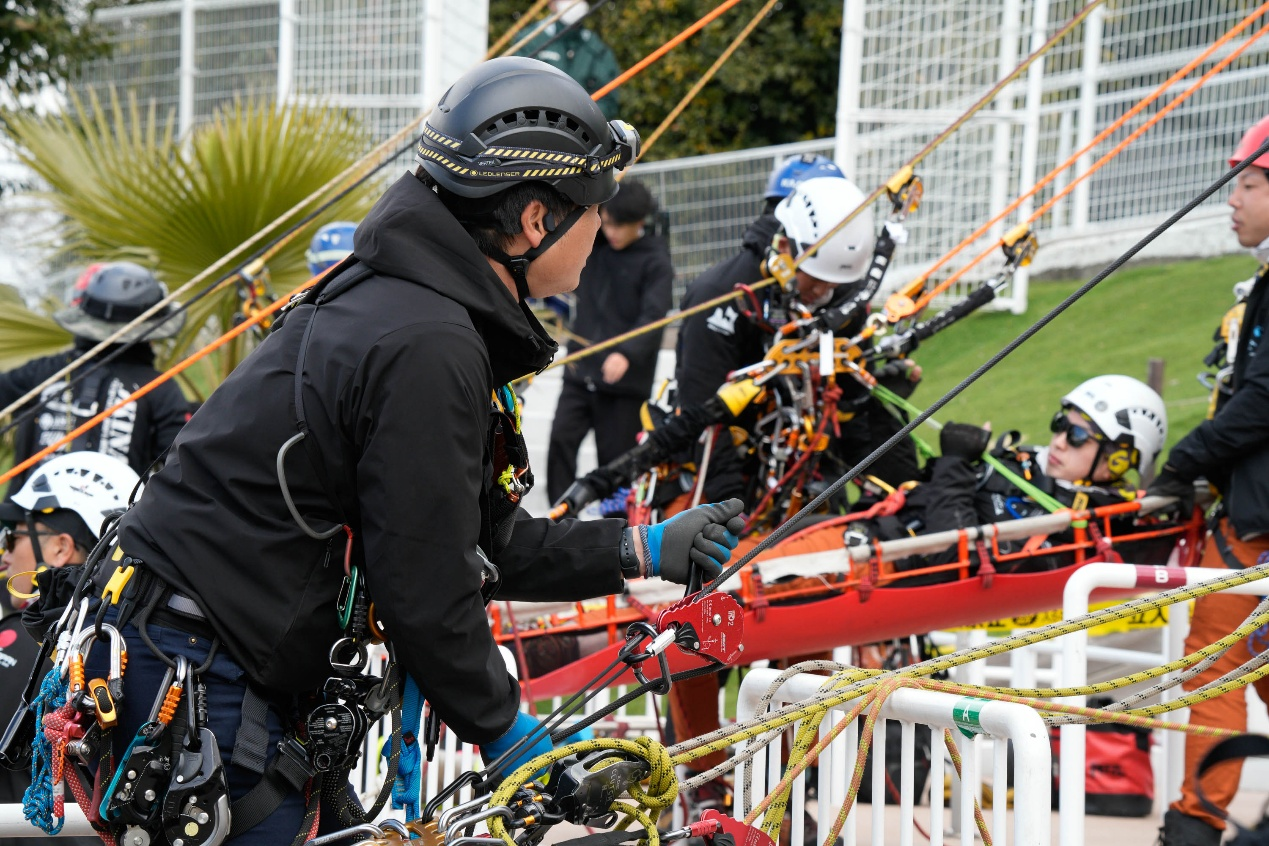
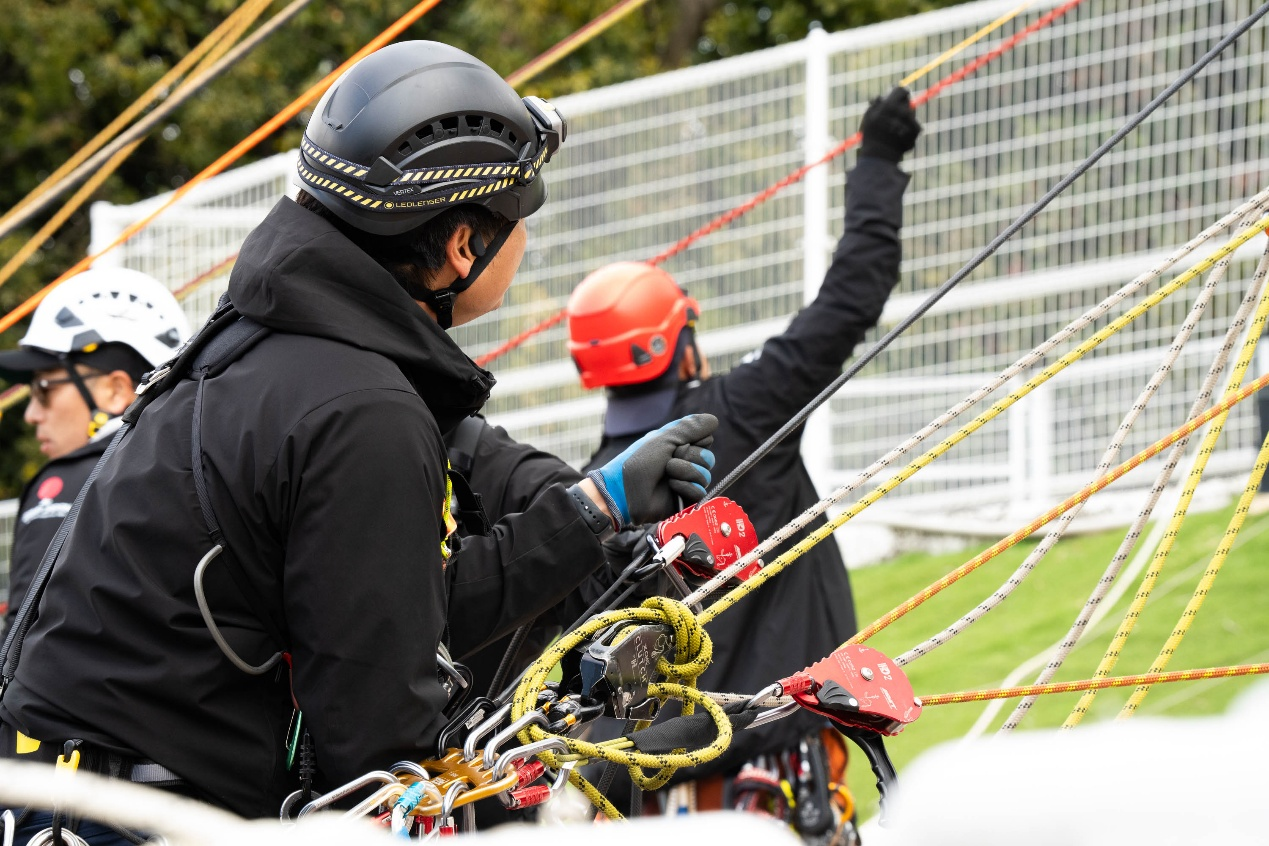
The ground anchor system is set up to ensure that both lifting and releasing operations are conducted
from the ground. As shown in the image, the control of the stretcher is managed by ground personnel.
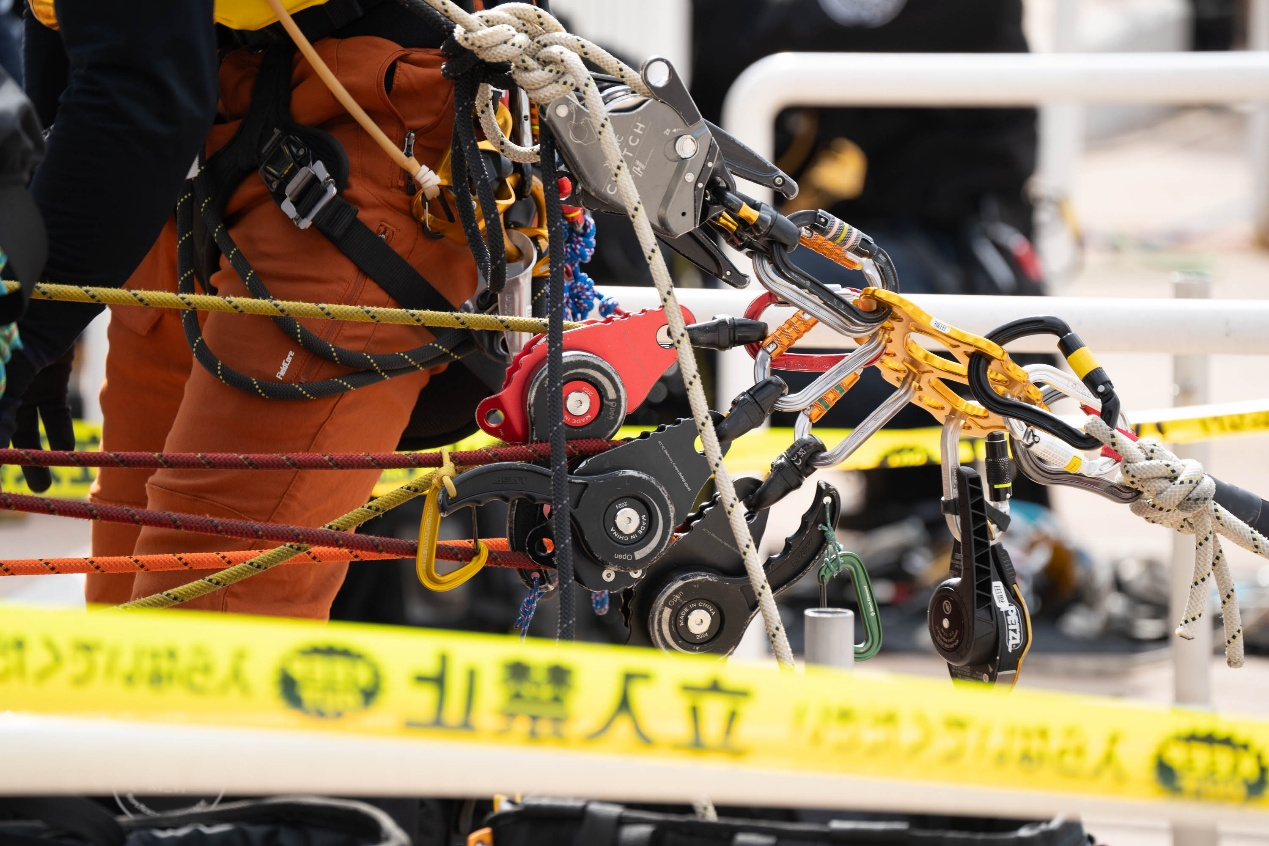
Example of the overhead system.
- Event Summary -
GRIMP JAPAN 2025 concluded successfully, with participants from around the world showcasing
exceptional skills and determination. It was gratifying to see some teams choosing ASAT products as
their competition gear. We take pride in supporting their passion and look forward to providing more
assistance to rescue professionals in the future, jointly advancing the development of rope rescue
technology.
Let’s anticipate the upcoming high-level rope rescue competitions in China, which are sure to bring
even more excitement and surprises!
ASAT – Always Safe, Always Trusted.
